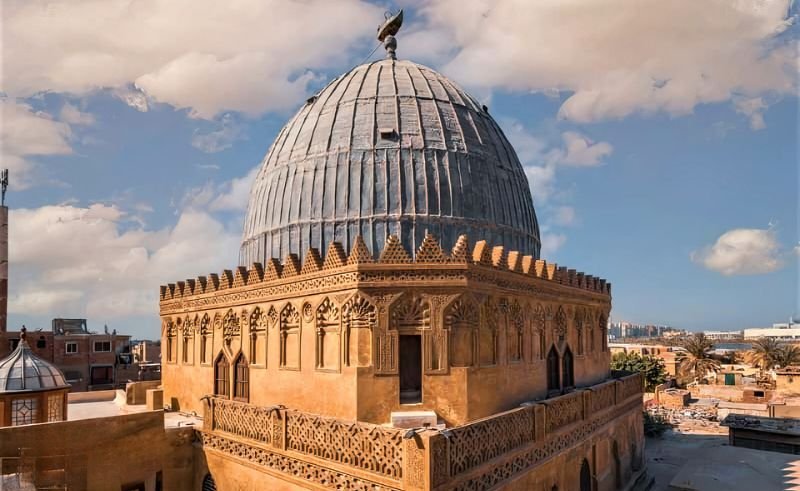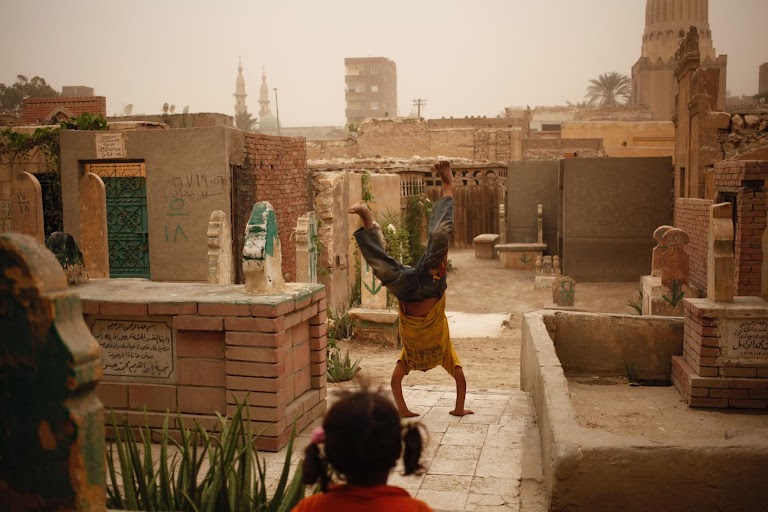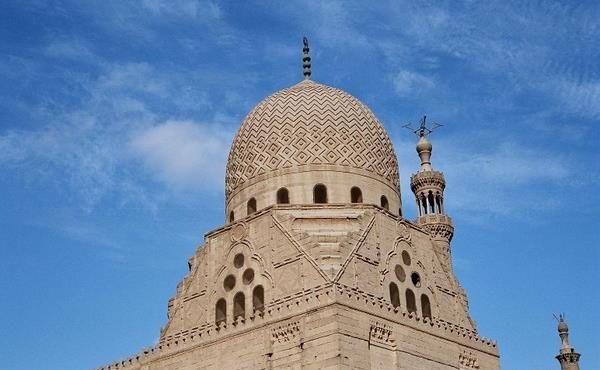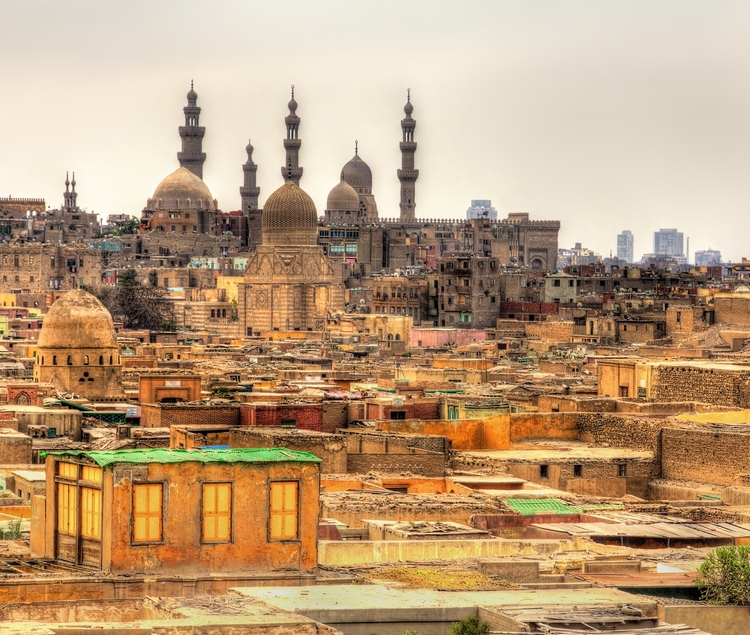is a vast necropolis (a cemetery) in Cairo that has served as a burial site for nearly 1,400 years.
A Brief History of Cairo’s City of the Dead
With its origins dating back to the 7th century, this cemetery is a testament to the city’s rich history and complex cultural landscape.
The City of the Dead coincided with the Islamic conquest of Egypt led by Amr ibn al-‘As, marking the beginning of a significant transformation in the region’s burial practices and urban development.
Al-Qarafa began as a burial ground for various Arab tribes who settled in the area following the founding of Fustat, the first capital of Islamic Egypt.
Each tribe established its own cemetery which led to the gradual expansion of what would become a vast necropolis over the centuries.
As Cairo grew and evolved, the necropolis expanded significantly during the Abbasid and Fatimid periods. These dynasties left their mark by constructing elaborate mausoleums and mosques, enriching the architectural landscape of the City of the Dead.
By the 10th century, the area had expanded so significantly that it reached the southern edge of what is now Cairo, thus becoming an integral part of the city’s identity.
The architectural significance of the City of the Dead is noteworthy. It features a fascinating mix of styles that reflect the various dynasties that ruled Egypt throughout its history.
The Mamluks, for instance, constructed stunning domed mausoleums that still stand today. A tribute to the artistic and cultural achievements of their era.

These structures serve as tombs and as monuments to the individuals buried within them (members of Egypt’s royal family), telling stories of power, faith, and cultural heritage.
Contrary to the common perception of cemeteries as solely places of mourning, the City of the Dead is home to thousands of descendants of families who have lived there for generations, actively managing the tombs and mausoleums as part of their daily lives.
Contemporary Life in the City of the Dead

The area is significant for its historical tombs and for serving as a gathering place for religious scholars and Sufis. Additionally, the presence of mosques and antique shops makes it an integral part of Cairo’s cultural landscape.
The City of the Dead often hosts cultural events and concerts at the MASQ (Maqad of Sultan Qaitbai), attracting a diverse crowd of locals and expats. These events help gradually change perceptions about the area with the testament of some travelers coming to Egypt.

Also, as a tourist attraction, the City of the Dead, situated to the south of the historic center of Cairo (near the Cairo Citadel) is famous for its glassblowers, who create beautiful handmade items.

For those intrigued by Mamluk architecture, the Amir Qurqumas Mosque and Sultan Inal Funerary Complex are essential stops, featuring stunning arabesque designs and remnants of a vibrant historical context.Although often considered a clear sign of urban encroachment, up to half a million people reside within its tombs and mausoleums.

While some residents have chosen to live here to be close to their ancestors, the majority moved in when the cost of living in central Cairo became unaffordable.
In recent years, government initiatives aimed at urban renewal have led to the demolition of parts of the necropolis, which sparked protests from conservationists and residents alike.
Critics argue that these actions erase significant pieces of Cairo’s history and threaten the livelihoods of those who call the City of the Dead home.
Despite these challenges, the residents of the City of the Dead maintain a sense of belonging and pride in their unique lifestyle. They have adapted to their environment over the years, creating a slower-paced life that contrasts sharply with the bustling city outside.
The City of the Dead in Cairo is a remarkable example of how a necropolis can serve as both a historical site and a living community. Its rich history, architectural beauty, and the resilience of its residents highlight the deep connections between life and death in Egyptian culture.






Comments (0)